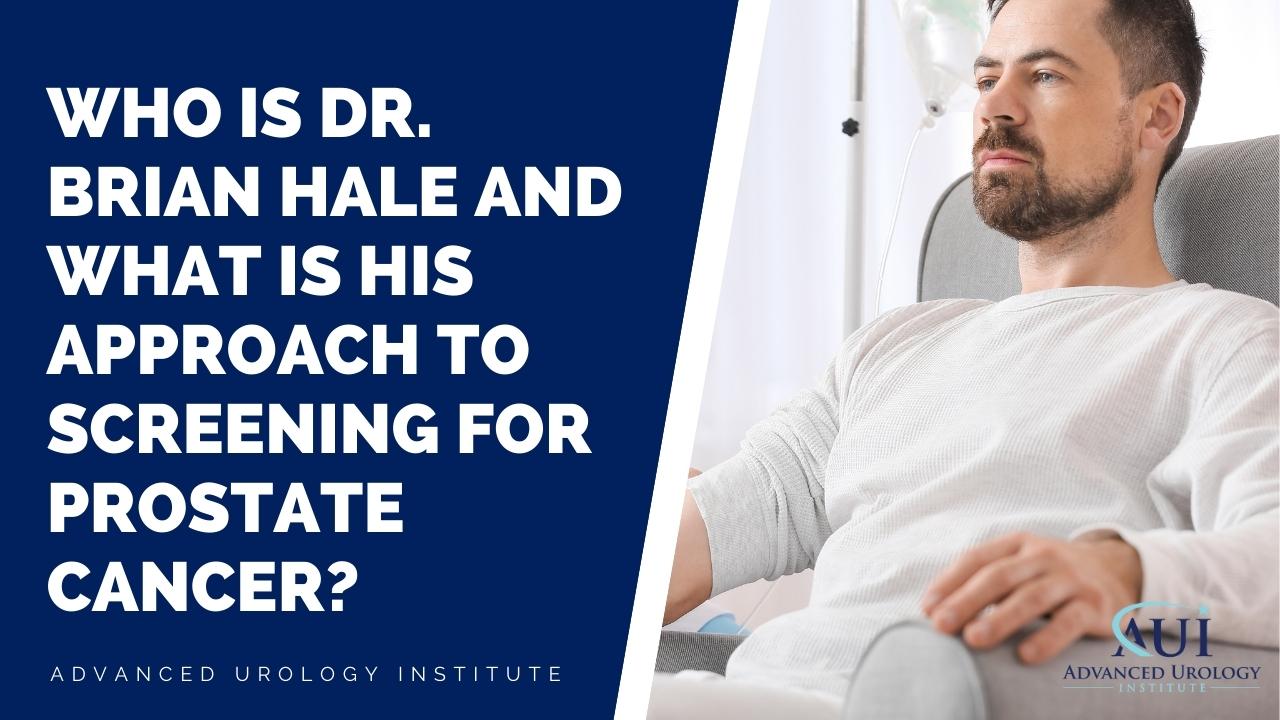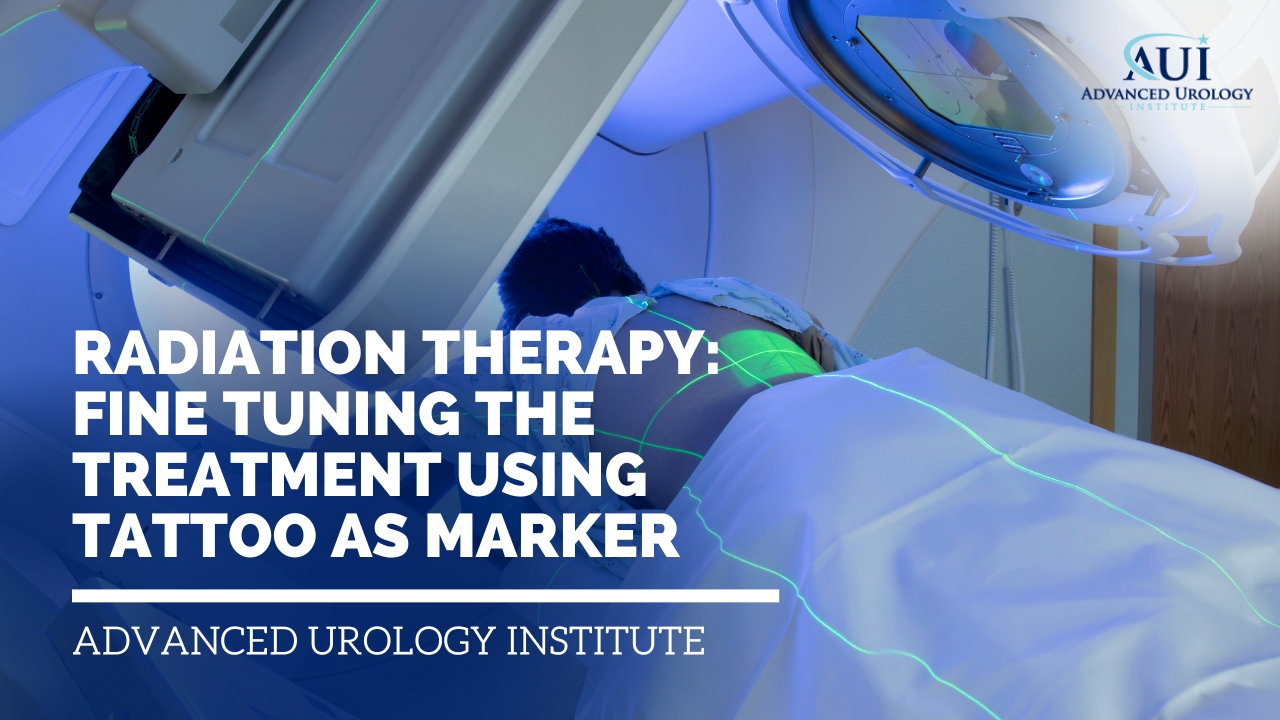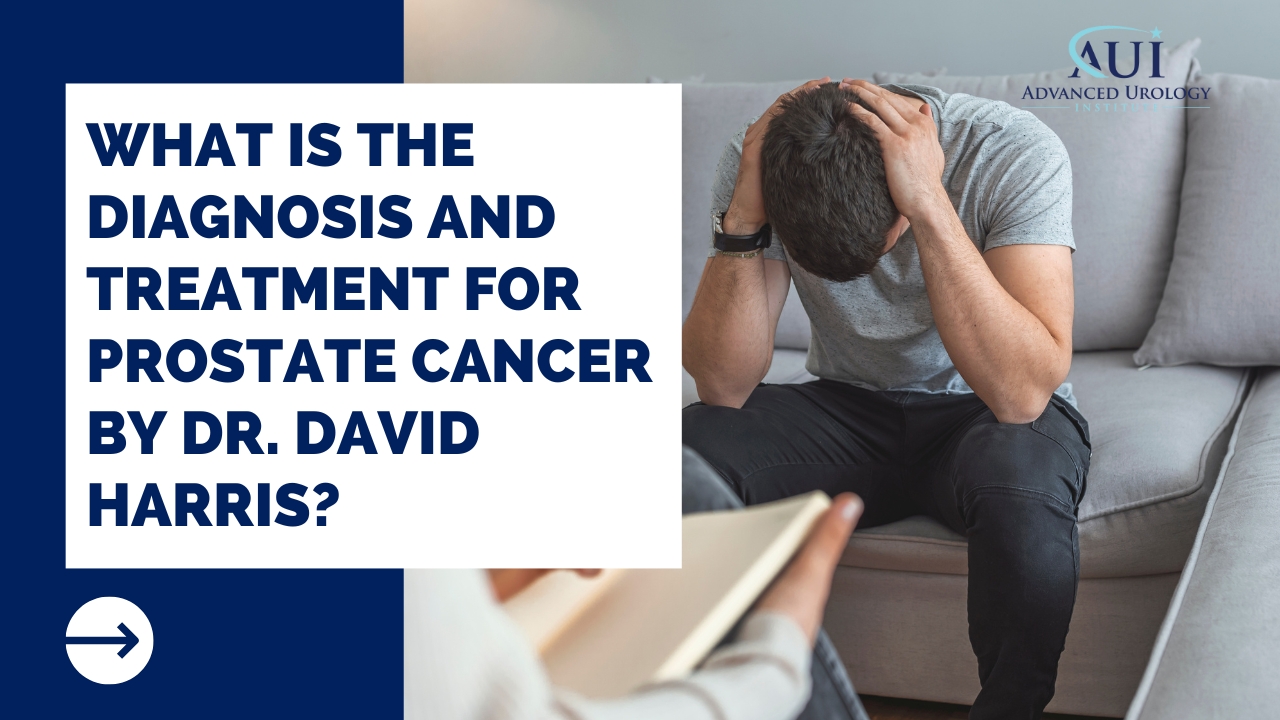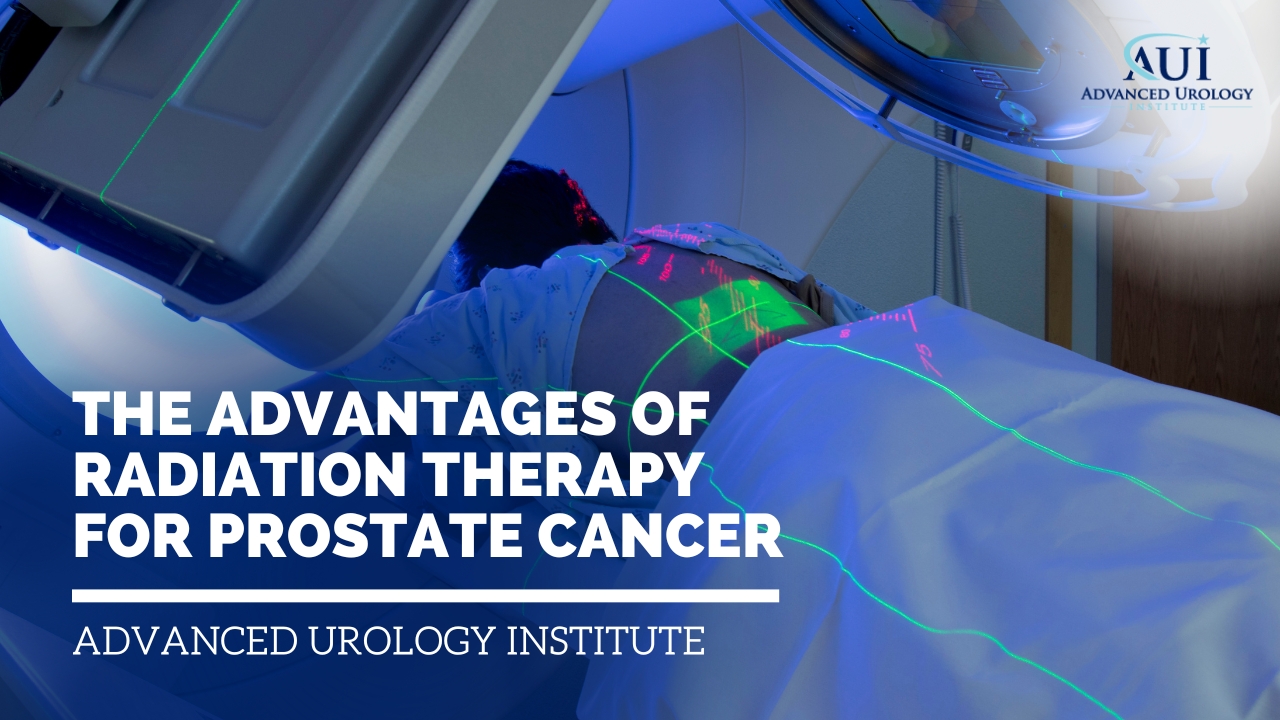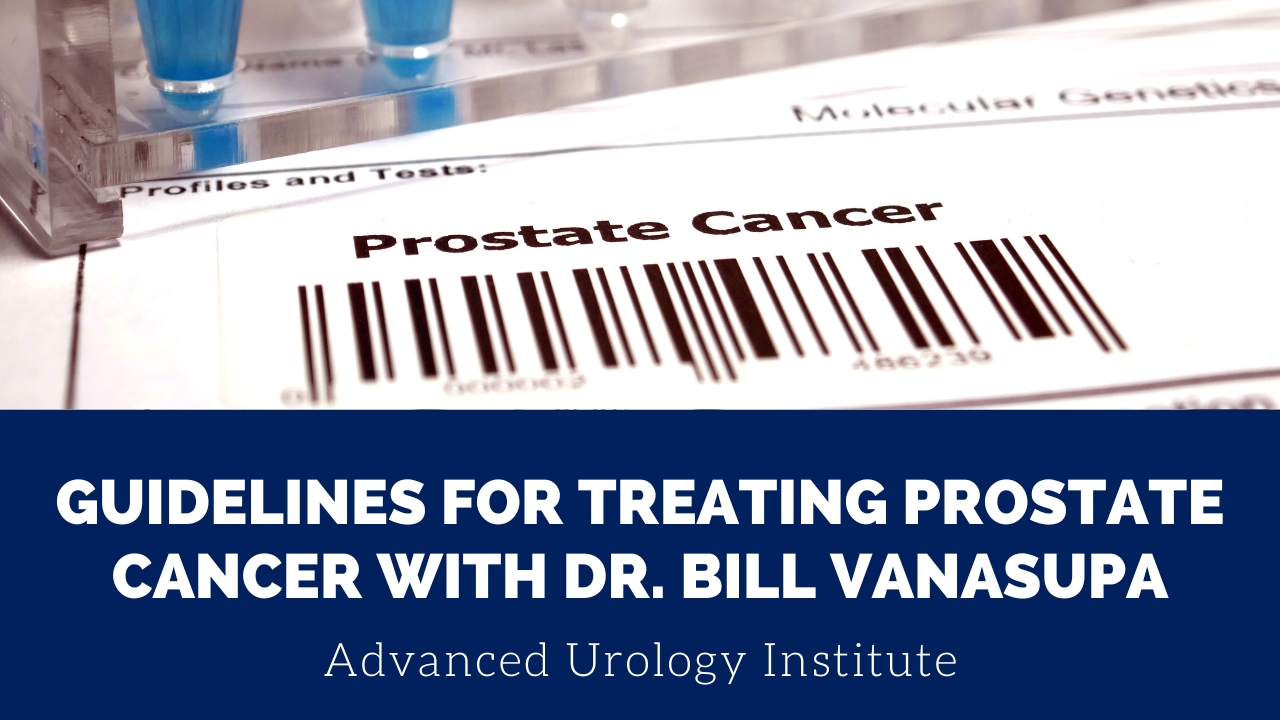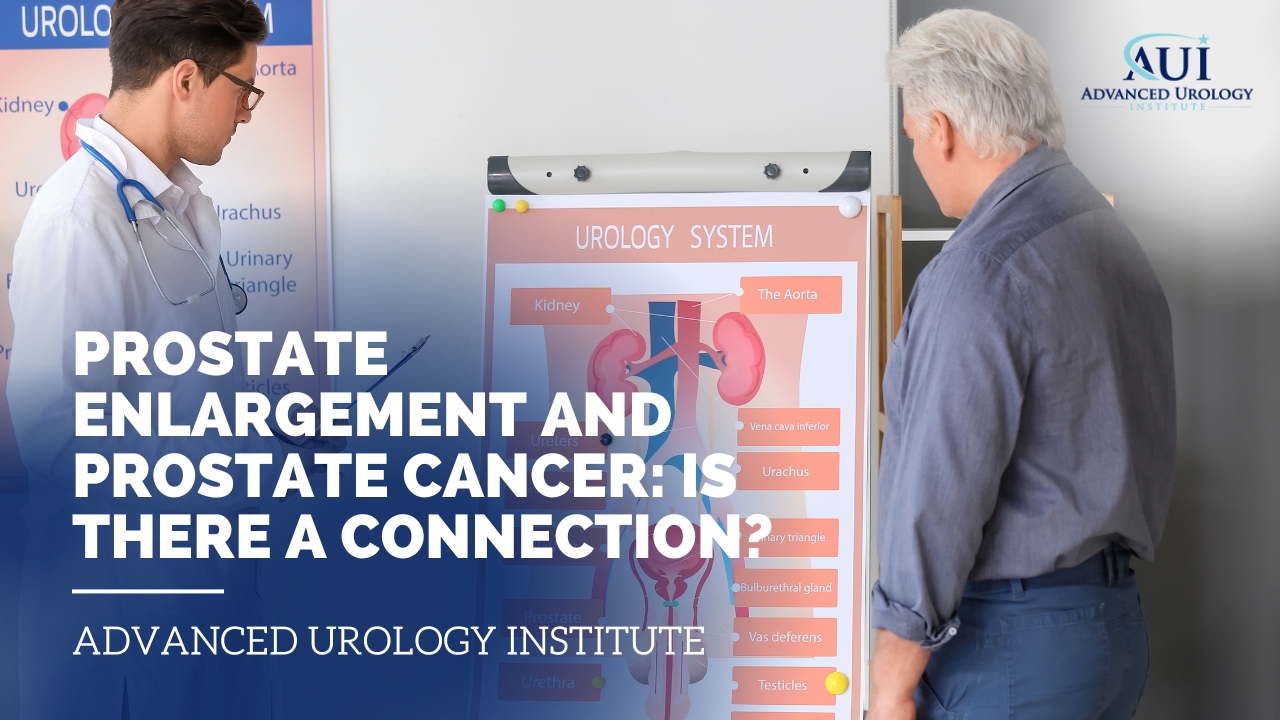Understand the importance of urology men’s health as AUI provides tips and strategies to help men maintain their prostate health
Continue readingWho is Dr. Brian Hale and what is his approach to screening for prostate cancer?
According to Dr. Hale, all men over the age of 50 should be screened for prostate cancer to avoid any serious complications in the future.
Continue readingRadiation Therapy: Fine Tuning the Treatment using Tattoo as Marker
CT scanning is vital in locating the prostate, and using marks on the patient’s body ensures proper alignment during the procedure.
Continue readingWhat is National Men’s Health Month and why is it important for men’s health?
National Men’s Health Month (NMHM) is an annual observance in June to bring awareness to the overall health and well-being of men.
Continue readingWhat is the diagnosis and treatment for prostate cancer by Dr. David Harris?
The first step in diagnosing prostate cancer is obtaining a biopsy, which provides crucial information. Learn more from urologist, Dr. Harris.
Continue readingThe Joys of Being a Radiation Therapist
Key Takeaways:
- Radiation therapists have the unique opportunity to develop deep, meaningful connections with the patients they treat.
- Seeing firsthand the positive impact of their work on the lives of the people they treat is a source of great joy and satisfaction.
- As a radiation therapist, you have the chance to grow both personally and professionally as you adapt to the ever-changing field of cancer treatment.
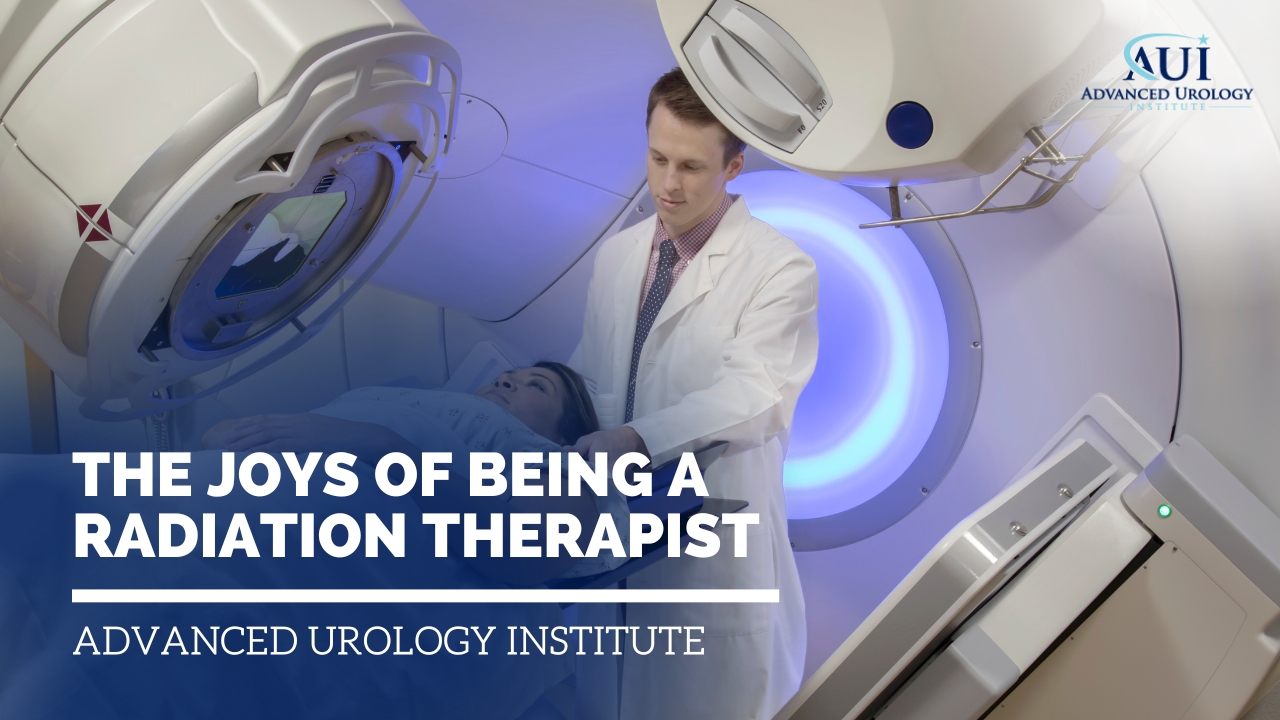 The Blessing of Impactful Relationships
The Blessing of Impactful Relationships
As a radiation therapist, you have the unique opportunity to develop deep, meaningful connections with the patients you treat. Fred, a radiation therapist at Advanced Urology Institute in Oxford, FL, shares his experience in building these relationships with prostate cancer patients throughout his 20-year career. He says, “It’s not uncommon for me to walk into Walmart on Saturday morning doing our grocery shopping with my wife and somebody will walk up and say, hey Fred, how’s it going?”
As you work closely with patients throughout their treatment, you’ll become an unforgettable figure in their lives, and they’ll undoubtedly become unforgettable to you. While it may be hard to remember everyone’s name, Fred explains that “the face never disappears.” These lasting bonds are a testament to the life-changing work radiation therapists do every day.
The Satisfaction of Seeing Healthy Patients
By being a radiation therapist, you play a crucial role in helping patients recover from life-threatening illnesses. Seeing firsthand the positive impact of your work on the lives of the people you treat is a source of great joy and satisfaction. Patients who show their gratitude for successful treatment and care make the work worth doing. Fred reports that “it’s such a wonderful feeling to see somebody three or four years down the road that walks up, gives you a hug, shakes your hand, and says, thanks, everything is fine.”
The Importance of Continued Growth
Throughout your career as a radiation therapist, you’ll have the opportunity to learn and grow as you treat patients and adapt to the ever-changing field of cancer treatment. This constant evolution ensures that you stay at the top of your game, providing the best care possible for those who rely on you for their health and well-being.
Life at Advanced Urology Institute
As a radiation therapist at Advanced Urology Institute – the largest urology practice in Florida – you’ll have the chance to work alongside other dedicated medical professionals who share your passion for helping patients. The supportive, collaborative environment at the practice ensures that all members of the team work together to provide the highest level of care for those undergoing prostate cancer treatment.
Join the Team and Experience the Joys for Yourself
If you’re intrigued by the idea of being a radiation therapist and have a passion for helping others, consider joining the team at Advanced Urology Institute in Oxford, FL. You’ll have the opportunity to develop lasting relationships, experience the satisfaction of seeing healthy patients, and grow both personally and professionally. In the end, you’ll understand precisely what makes this work so rewarding and fulfilling.
References:
- “Radiation Therapist Career.” https://www.cambridgehealth.edu/radiation-therapist/radiation-therapist-career/.
- “5 Reasons to Become a Radiation Therapist.” https://www.cambridgehealth.edu/radiation-therapist/become-a-radiation-therapist/5-reasons-to-become-a-radiation-therapist/.
- “14 Pros and Cons of Being a Radiation Therapist.” https://www.exploremedicalcareers.com/radiation-therapist/pros-and-cons/.
Transcription:
My name is Fred. I’m a radiation therapist here at Advanced Prostate Cancer Institute. I’ve been doing this for about 20 years and it’s all been in this local area. It’s not uncommon for me to walk into Walmart on Saturday morning doing our grocery shopping with my wife and somebody will walk up and say, hey Fred, how’s it going? You turn around and you look and it’s somebody that you treated a year, two, three, four years ago, five years ago. It’s to the point now that I’ve been here long enough to where I can’t remember everyone’s name. There’s literally been thousands of people that have come across these tables that I’ve been using to treat patients with, but the face never disappears. And it’s such a wonderful feeling to see somebody three or four years down the road that walks up, gives you a hug, shakes your hand and says, thanks, everything is fine. That’s what makes this job worth doing.
Side Effects with Radiation Therapy for Prostate Cancer
Key Takeaways:
- Technology advancements have made radiation therapy for prostate cancer far less daunting than it was in the past.
- Radiation therapy is non-invasive and virtually painless.
- Advanced Urology Institute in Oxford, FL offers state-of-the-art radiation therapy for prostate cancer.
Introduction: Changing Perceptions on Radiation Therapy
Radiation therapy for prostate cancer has come a long way in the past decade. Patients who have heard stories of their friends’ experiences with older treatments may be apprehensive. However, as one patient describes, “ten years ago, my buddy had this treatment, I’m real concerned that I’m going to go through the same thing.” Thankfully, they quickly learn that their treatment course will be much different, with far fewer side effects, due in large part to advances in technology.
The Treatment Experience: Simple, Pain-Free
One of the primary benefits of modern radiation therapy for prostate cancer is that the treatment is non-invasive and virtually painless. As one patient recounts, “their treatment time comes, they lay on the table, the machine rotates around them. It’s kind of like getting an x-ray. About ten minutes later, they’re done.” The hardest part, they say, is simply getting to the clinic every day. Patients undergoing radiation therapy for prostate cancer are often surprised by its simplicity and pain-free nature.
Targeted Treatment: Minimizing Side Effects
The new technology involved in radiation therapy has been developed to minimize side effects. By focusing the radiation precisely on the target area, side effects caused by radiation damage to surrounding tissues are significantly reduced. Patients treated with the latest technology are less likely to experience the same side effects as those who underwent treatment ten years ago.
Life After Treatment: A Positive Outlook
For many patients who have completed radiation therapy, the overall experience and recovery process is far more manageable than they initially imagined. After completing their first session, patients are often shocked by the ease and painlessness of the treatment, exclaiming “that’s it?” Confident in their decision to undergo radiation therapy, they can focus on their recovery and long-term health with a positive outlook.
Choosing The Right Clinic: Advanced Urology Institute
Finding the right clinic for prostate cancer treatment is essential. Advanced Urology Institute, the largest urology practice in Florida, offers state-of-the-art radiation therapy for prostate cancer. Their expert team, located in Oxford, FL, specializes in providing patients with effective, personalized treatment plans to minimize side effects while maximizing results. Choosing Advanced Urology Institute for your radiation therapy ensures that you will receive the highest standard of care and the most advanced treatment options available.
In summary, advancements in technology have made radiation therapy for prostate cancer treatment far less daunting than it might have been in the past. With cutting-edge techniques that minimize side effects and a focus on patient comfort, those undergoing radiation therapy can expect a positive, pain-free experience. For those seeking treatment in Florida, the Advanced Urology Institute is the premier choice for prostate cancer care. Their Oxford, FL location offers state-of-the-art radiation therapy backed by an expert medical team dedicated to patient success.
Transcription:
So, the patients that come in and say, 10 years ago my buddy had this treatment, I’m real concerned that I’m going to go through the same thing. They’re not going to see and experience the same side effects that a person who had treatment 10 years or later is going to have. Their treatment course is going to be a much different treatment course. Generally, the side effects using the new technology are going to be significantly less than they were with the older technology that we had. So, when patients hear that, they say, well gosh, that sounds really good. In general, radiation therapy for the most part is a painless procedure. It’s maybe some of the side effects that go along with radiation therapy depending on the target that we’re treating. For prostate cancer patients, they’re generally not going to have any side effects that are going to cause any pain. The treatment is going to be painless. The hardest thing they’re going to have to do is basically get to the clinic every day. When they get to the clinic, their treatment time comes, they lay on the table, the machine rotates around them. It’s kind of like getting an x-ray. About 10 minutes later, they’re done. The therapists come in the room and lower the patient on the table. On the first day, the patients normally say, hey, that’s it? And we say, yeah, that’s it. That’s all we have to do. So, they’re generally surprised about the non-invasive, painless treatment that radiation therapy gives.
How to Treat Prostate Cancer – Dr. Sean Heron
KEY TAKEAWAYS:
- Watchful waiting may be appropriate for patients with slow-growing or non-aggressive prostate cancers, allowing for later treatment if the cancer progresses.
- Radiation therapy, such as IMRT and IGRT, is a less invasive treatment option with fewer complications than other approaches.
- The Advanced Urology Institute, led by Dr. Sean Heron, offers comprehensive care for patients with prostate cancer and other urological issues.
Prostate cancer is a common concern for many men, and understanding the available treatment options is crucial for making informed decisions about care. Dr. Sean P. Heron, a urologist in St. Petersburg, FL, discusses the various treatment options for prostate cancer, including watchful waiting, radiation therapy, and surgery. The Advanced Urology Institute is a leading urology practice in Florida, offering comprehensive care for patients dealing with prostate cancer and other urological issues.
Additional Pathology Studies and Watchful Waiting
Dr. Heron explains that once a patient has been diagnosed with prostate cancer, additional pathology studies can help determine the appropriate course of action. In some cases, patients may choose watchful waiting, which involves monitoring their prostate-specific antigen (PSA) levels every few months and undergoing a repeat biopsy after a year. This approach may be appropriate for patients with slow-growing or non-aggressive cancers, as it allows for the possibility of treating the cancer later if it becomes more progressive.
Radiation vs. Surgery
For patients who require treatment, the decision often comes down to choosing between radiation therapy and surgery. Dr. Heron and the team at the Advanced Urology Institute specialize in intensity-modulated radiation therapy (IMRT) and image-guided radiation therapy (IGRT), which are less invasive and typically have fewer complications than other treatment options. These specialized radiation treatments can effectively target cancerous tissue while minimizing damage to healthy tissue.
Cryosurgery and Radical Surgery
Dr. Heron has expertise in cryosurgery, a technique that uses extreme cold to destroy cancerous tissue. While he was the first doctor extensively trained in cryosurgery in Pinellas County, Dr. Heron acknowledges that this treatment can carry more morbidity than radiation therapy. Radical surgery, on the other hand, is another treatment option for patients who require a more aggressive approach. Dr. Heron and his team at the Advanced Urology Institute are well-versed in performing radical surgery when it is indicated and desired by the patient.
Advanced Urology Institute
The Advanced Urology Institute is the largest urology practice in Florida, offering state-of-the-art care for patients with prostate cancer and other urological conditions. Led by experienced professionals like Dr. Sean Heron, the institute provides personalized, comprehensive treatment plans designed to address each patient’s unique needs and preferences.
TRANSCRIPTION:
My name is Dr. Sean Heron and I’m with Advanced Urology Institute.
In terms of treatment, now we have a lot of additional pathology studies once patients
have cancer to look at it to decide, hey, do I even need to get this treated and patients
often choose just watchful waiting and will check their PSA every few months, repeat a
biopsy after a year and maybe treat them later if it is getting worse or more progressive.
A lot of times it comes down to radiation versus surgery.
I do have some expertise in cryosurgery.
I was the first doctor really trained for that in Pinellas County extensively, but it
really carries a lot more morbidity than the radiation treatment and everywhere throughout
the AUI.
We specialize in IMRT, IGRT, specialized radiation treatment that’s less invasive and doesn’t
have too much complications and I think we’re all pretty well versed in doing radical surgery
when that’s indicated and that’s what the patient wants to have.
REFERENCES:
- “Intensity-modulated radiation therapy (IMRT) – Mayo Clinic.” 9 Mar. 2023, https://www.mayoclinic.org/tests-procedures/intensity-modulated-radiation-therapy/about/pac-20385147.
- “IGRT – Image-Guided Radiation Therapy – RadiologyInfo.org.” https://www.radiologyinfo.org/en/info/igrt.
- “Cryotherapy for Prostate Cancer.” 1 Aug. 2019, https://www.cancer.org/cancer/prostate-cancer/treating/cryosurgery.html.
The Advantages of Radiation Therapy for Prostate Cancer
Key Takeaways:
- Radiation therapy offers a host of advantages for prostate cancer treatment, including minimal side effects and the ability to maintain an active lifestyle throughout the process.
- The Advanced Urology Institute offers top-notch radiation therapy services to patients in Oxford, FL, and the surrounding areas, providing convenience and accessibility.
- It is important to consult with your healthcare team to determine the best course of action for your unique situation, and to take advantage of the expertise of leading specialists at the Advanced Urology Institute.
Introduction to Radiation Therapy
Radiation therapy has emerged as a highly effective means of prostate cancer treatment. In contrast to more invasive surgical methods or other approaches, radiation therapy offers a host of advantages, often allowing patients to maintain their active lifestyles throughout the treatment process. In the words of Dr. Michael Chancellor, a board-certified radiation oncologist at the Advanced Prostate Cancer Institute, “If you play golf, you can continue to play golf. If you exercise, you can continue to exercise. There’s no period such as after surgery of incontinence or no period of recovery.”
Minimizing Side Effects and Downtime
One of the key benefits of radiation therapy is the minimization of side effects typically experienced during prostate cancer treatment. Dr. Chancellor observes, “While on radiation therapy, treatment side effects tend to be mild, and the incidence of more severe side effects is actually fairly low.” This means that patients can continue their usual activities while undergoing treatment, including driving back and forth for their appointments.
Maintaining an Active Lifestyle
In contrast to other treatments that may require periods of inactivity or recovery, radiation therapy offers patients the opportunity to maintain their active lifestyles throughout the treatment process. This is a critical advantage for those who rely on regular exercise or other activities to maintain their overall well-being, and it can also help to alleviate some of the stress that can accompany a cancer diagnosis. As Dr. Chancellor points out, patients can continue to enjoy their hobbies, exercise, and engage in daily activities without the need for significant downtime.
Convenience and Accessibility
Radiation therapy for prostate cancer is not only effective but also highly accessible. The Advanced Urology Institute, the largest urology practice in Florida, offers top-notch radiation therapy services to patients in Oxford, FL, and the surrounding areas. This means that receiving high-quality prostate cancer treatment is closer and more convenient than ever before. With radiation therapy, there is no need to travel long distances for treatment or to take extended periods of time off work, allowing you to focus on what truly matters – your health and well-being.
Choosing the Right Prostate Cancer Treatment for You
Ultimately, the decision to undergo radiation therapy should be made in consultation with your healthcare team. It is essential to consider all of the available options and to weigh the potential benefits and risks of each approach. The information provided here is intended to empower you with knowledge and insight into the advantages of radiation therapy, but it is important to consult with your physician and other specialists to determine the best course of action for your unique situation.
The Advanced Urology Institute – Providing Top-Notch Prostate Cancer Treatment in Oxford, FL
The Advanced Urology Institute, the largest urology practice in Florida, is committed to offering cutting-edge radiation therapy services to patients in Oxford, FL, and the surrounding areas. With the expertise of leading specialists like Dr. Michael Chancellor, you can trust that you will receive exceptional care and treatment throughout every stage of your prostate cancer journey. Don’t hesitate to take control of your health – contact the Advanced Urology Institute today to discuss your prostate cancer treatment options and to learn more about the incredible benefits of radiation therapy.
References:
- Chancellor, M. (2021). The Advantages of Radiation Therapy for Prostate Cancer: A Comprehensive Guide on Prostate Cancer Treatment in Oxford, FL. Advanced Urology Institute. https://www.advancedurologyinstitute.com/blog/the-advantages-of-radiation-therapy-for-prostate-cancer/
2. Chancellor, M. (2021, June 28). Radiation Therapy for Prostate Cancer. Advanced Urology Institute. https://www.advancedurologyinstitute.com/radiation-therapy-for-prostate-cancer/
3. American Cancer Society (2020, October 6). Radiation Therapy for Prostate Cancer. American Cancer Society. https://www.cancer.org/treatment/treatments-and-side-effects/treatment-types/radiation/radiation-for-prostate-cancer.html
4. Advanced Urology Institute (2021). About Us. Advanced Urology Institute. https://www.advancedurologyinstitute.com/about/
5. Mayo Clinic Staff (2017, April 27). Prostate Cancer. Mayo Clinic. https://www.mayoclinic.org/diseases-conditions/prostate-cancer/symptoms-causes/syc-20353087
Transcription:
Hi, I’m Dr. Michael Chancellor. I’m a board certified radiation oncologist here at the Advanced Prostate Cancer Institute. Some of the more desirable aspects of radiation therapy treatment for prostate cancer as opposed to surgical or other approaches is that a patient is able to maintain most typically his active lifestyle. If you play golf, you can continue to play golf. If you exercise, you can continue to exercise. There’s no period such as after surgery of incontinence or no period of recovery. While your own radiation therapy treatment side effects tend to be mild, the incidence of more severe side effects is actually fairly low. So people are able to exercise, maintain their lifestyle, go about their normal activities while undergoing radiation treatment. And of course, this means being able to drive back and forth for treatment.
Exploring the Diagnosis of Enlarged Prostate
Your doctor will diagnose an enlarged prostate by performing a physical exam, collecting a urine sample, and conducting various other tests that may include a urinalysis, ultrasound and blood test.
Continue readingDon’t Let an Enlarged Prostate Go Undetected: Recognizing the Symptoms
Enlarged prostate, medically known as benign prostatic hyperplasia (BPH), is a common condition among men over the age of 50 in which the prostate grows larger than normal. It’s essential to understand the causes and symptoms of an enlarged prostate in order to take the necessary steps to diagnose and treat the problem.
Continue readingGuidelines for Treating Prostate Cancer with Dr. Bill Vanasupa
Dr. Billy Vanasupa talks about the importance of informed decision-making when it comes to prostate cancer treatment. While medical professionals can offer guidance and recommendations based on the latest research and guidelines, ultimately, the patient should have a say in their treatment plan.
Continue readingTreatment Options That Are Available for Prostate Cancer – Dr. Amar Raval
In this video, Dr. Raval provides a clear and concise overview of the different treatment options for prostate cancer. It is important for patients to take an active role in their own care and work closely with their doctor to develop a treatment plan that is tailored to their individual needs and circumstances.
Continue readingProstate Enlargement and Prostate Cancer: Is there a Connection?
Prostate enlargement neither causes nor turns into prostate cancer, and is a completely separate condition. In fact, the risk of prostate cancer is lower in men with an enlarged prostate than in men without the condition. However, the two conditions are linked in various ways. Here are four ways in which BPH and prostate cancer are connected
Continue readingEarly detection of prostate problems
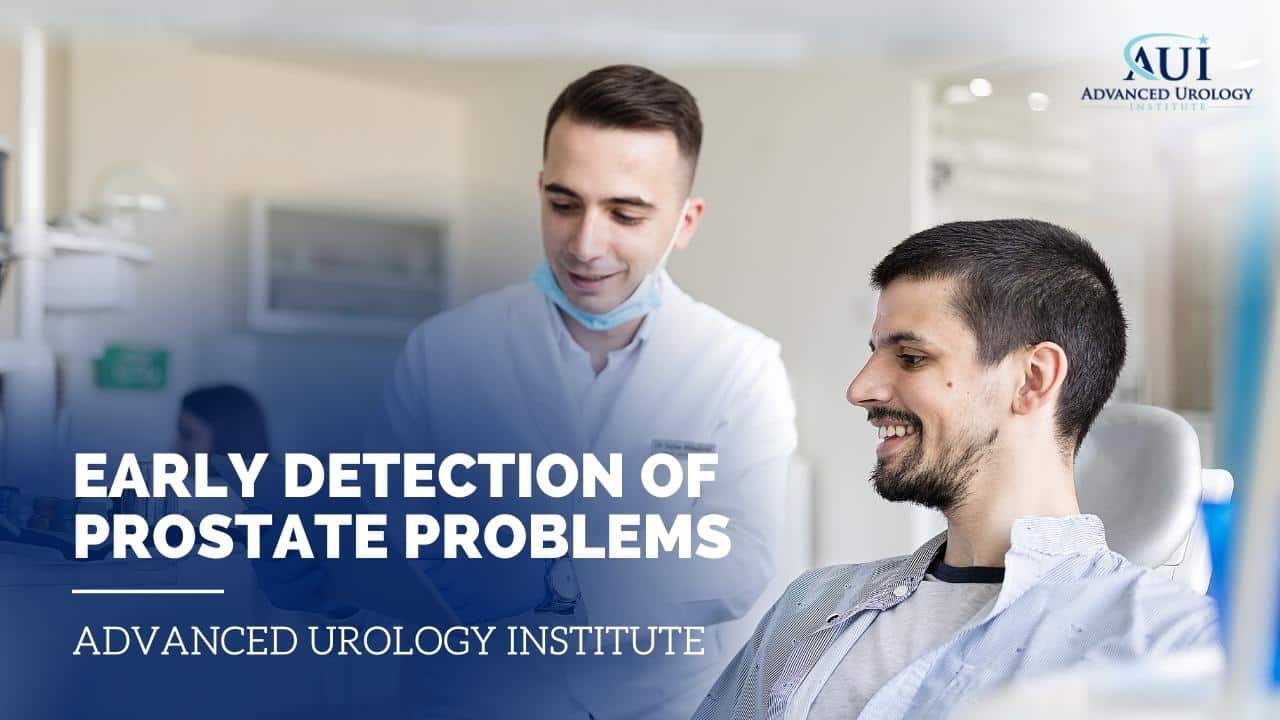 The prostate is a tiny gland located just beneath the bladder and in front of the rectum. It surrounds the urethra and produces fluid that forms part of the semen.
The prostate is a tiny gland located just beneath the bladder and in front of the rectum. It surrounds the urethra and produces fluid that forms part of the semen.
Though small in size, the prostate is one of the most talked-about glands in men and which causes a lot of concerns. In fact, all men are at risk of developing prostate problems.
The prostate problems include:
- Prostatitis
This is an issue frequently associated with young and middle-aged men. Prostatitis refers to inflammation of the prostate due to a bacterial infection or other cause. Only 5-10 percent of men develop prostatitis in their lifetime.
- Benign prostatic hyperplasia (BPH)
Also called an enlarged prostate, BPH is the growth of the prostate gland to a large, unhealthy size. The risk of having the problem increases with age.
While just 8-percent of men in the ages 31-40 may develop the condition, up to 50-percent of men aged 51-60 years and more than 80-percent of men aged over 80 years have BPH.
An enlarged prostate is neither prostate cancer nor a cause of the cancer. Also, only 50-percent of men with BPH develop symptoms that are severe enough to warrant treatment.
- Prostate cancer
Prostate cancer is one of the most common cancers in men with more than 16 percent of men diagnosed with the cancer in their lifetime. Nevertheless, it is a slow-growing cancer and only about 2-percent of men end up dying of the cancer.
Just like BPH, the risk of having prostate cancer increases with age. In fact, 75-percent of men with the cancer are usually aged 65 years and older.
The exact cause of prostate cancer is unknown, but risk factors include family history and race. For instance, if you have a brother or father with prostate cancer your risk of the disease increases by more than double. Also, African-American men are at a greater risk of the cancer than Caucasians.
That is why African-American men and those with family history of the disease are advised to begin screening at an earlier age than the rest of men.
Symptoms of prostate problems
Because the prostate is located just beneath the bladder and surrounds the urethra, problems with the gland usually result in urinary symptoms.
For instance, while prostatitis rarely shows symptoms, it may cause:
- Pain when urinating or ejaculating
- Turbid or cloudy urine
- An urge to urinate more often
- Pelvic pain
- Chills and fever
Like prostatitis, an enlarged prostate may not cause symptoms until it compresses the urethra and makes urination difficult. When it shows symptoms, BPH produces:
- Frequent urination, particularly at night
- Inability to delay urination
- Difficulty starting or stopping urination
- Feeling as if you can’t get all urine out
- Weak urine stream or interrupted stream
- Dribbling at the end of urination
- Accidental loss of urine
- Pain during urination or after ejaculation
- Urine of unusual smell or color
Early-stage prostate cancer does not usually show symptoms and is often only discovered after screening with the prostate-specific antigen (PSA) test or the digital rectal exam (DRE). But advanced prostate cancer shows symptoms such as:
- Trouble urinating
- Blood in urine or semen
- Reduced force in urine stream
- Inability to urinate
- Pain or burning sensation during urination
- Blood in urine or ejaculate
- Bone pain
- Back pain
- Erectile dysfunction
- Loss of weight without trying
Early detection of prostate problems
- Prostatitis
With prostatitis, the infection is detected early through symptoms. For example, acute bacterial prostatitis tends to begin suddenly, producing chills, fever, or pain in addition to urinary symptoms. Visiting the doctor right away helps to diagnose and treat the infection.
Chronic bacterial prostatitis is a prostate infection that recurs. It is detected via reappearance of similar symptoms that trigger visits to the doctor. When diagnosed, it is managed with antibiotics, though it is quite hard to treat.
Equally, chronic prostatitis, also called chronic pelvic pain syndrome, can be detected early through symptoms such as persistent pain in the lower back, groin or tip of the penis. It is treated with a combination of medicines, surgery and lifestyle changes.
- An Enlarged Prostate
Like prostatitis, an enlarged prostate can be detected early through symptoms—though such symptoms do not usually match the severity of the condition. That is why men who start to experience urinary symptoms should consult a urologist as soon as possible.
An early visit to a urologist when you have symptoms helps to:
- Catch BPH in early stages when less invasive procedures are most effective.
- Bring the symptoms under control and improve quality of life.
- Rule out other potential causes of urinary symptoms, such as prostate cancer.
- Prostate Cancer
Since prostate cancer tends to show no early warning signs and only produces symptoms when at an advanced stage, early detection is not achieved through symptoms. Instead, the cancer is detected early by screening tests, usually prostate-specific antigen (PSA) test and digital rectal exam (DRE).
Screening means testing to find prostate cancer in a man without symptoms. The tests used do not provide a diagnosis, but offer valuable information to help find the disease early. Plus, the tests are quick and safe.
Should you undergo screening for prostate cancer?
Screening for prostate cancer is controversial—while some doctors and organizations recommend regular screenings other organizations don’t.
According to the American Cancer Society, you should speak with your doctor about the benefits, risks, and limitations of screening before you make the decision to get tested. The organization asserts that you should not undergo PSA blood testing before this discussion. And that the discussion should begin at age 45 if you’re a man at higher risk and at age 50 if you have average risk of the cancer.
Another organization, the American Urological Association, recommends speaking with your doctor about the risks and benefits of prostate cancer screening when you’re aged 55 to 69 years. But that you should only proceed with testing based on your preferences and personal values.
American Urological Association:
- Does not recommend PSA screening if you are below 40 years.
- Does not recommend routine PSA screening if you are between the ages 40-54 and at an average risk of the cancer.
- Does not recommend PSA screening in men aged over 70 years and those with a life-expectancy of less than 10 years.
- Does not recommend annual screening, but instead routine screening at intervals of 2 years or more, which must be preceded by a discussion with your doctor.
The United States Preventive Services Task Force does not recommend routine PSA screening for men in the general population, regardless of age. According to the organization, routine cancer screening can detect slow-growing cancers, which are then managed using therapeutic techniques with serious adverse effects but with no much benefit to the patient.
Prompt effective diagnosis of prostate problems
At Advanced Urology Institute, we are committed to early detection of prostate problems. We believe that it is important for patients to participate in screening programs for patients with the chance to speak with experienced physicians and the opportunity for informed decision-making and timely follow-up care.
We provide our patients with open, compassionate consultations that allow for informed decision-making and proper follow-up care, resulting in access to high-quality, objective diagnosis and treatment decisions. Plus, we guard against screening related problems, such as over-diagnosis and treatment of clinically insignificant conditions.
For more information on prostate cancer and other urological disorders, visit the site “Advanced Urology Institute.”



